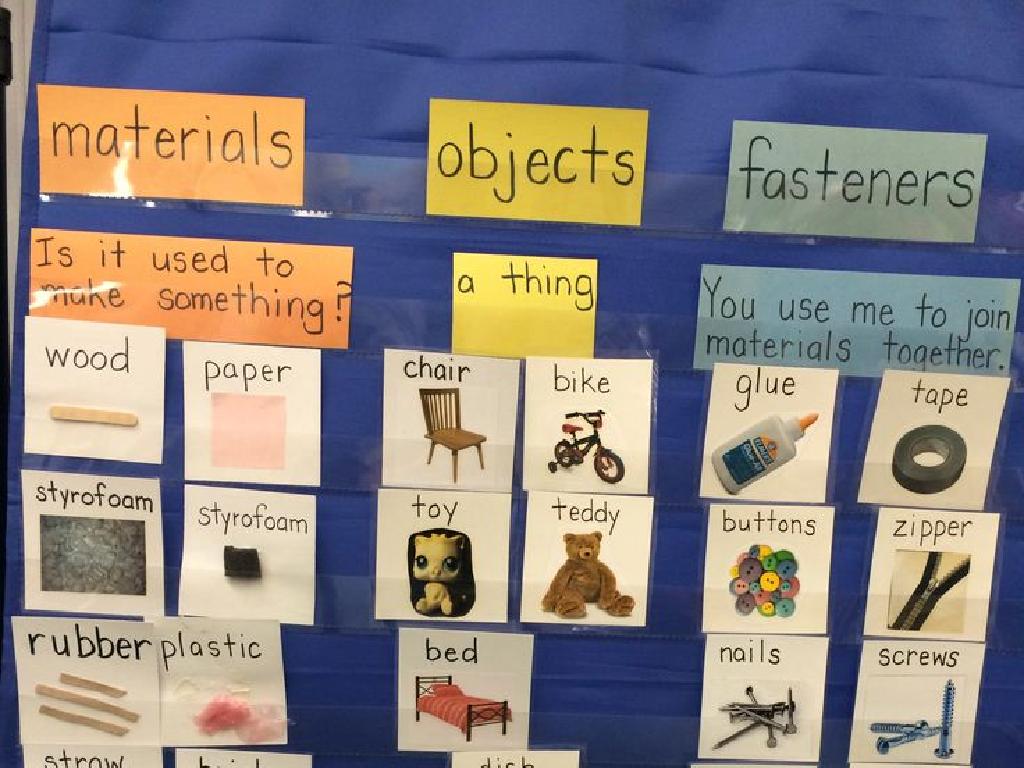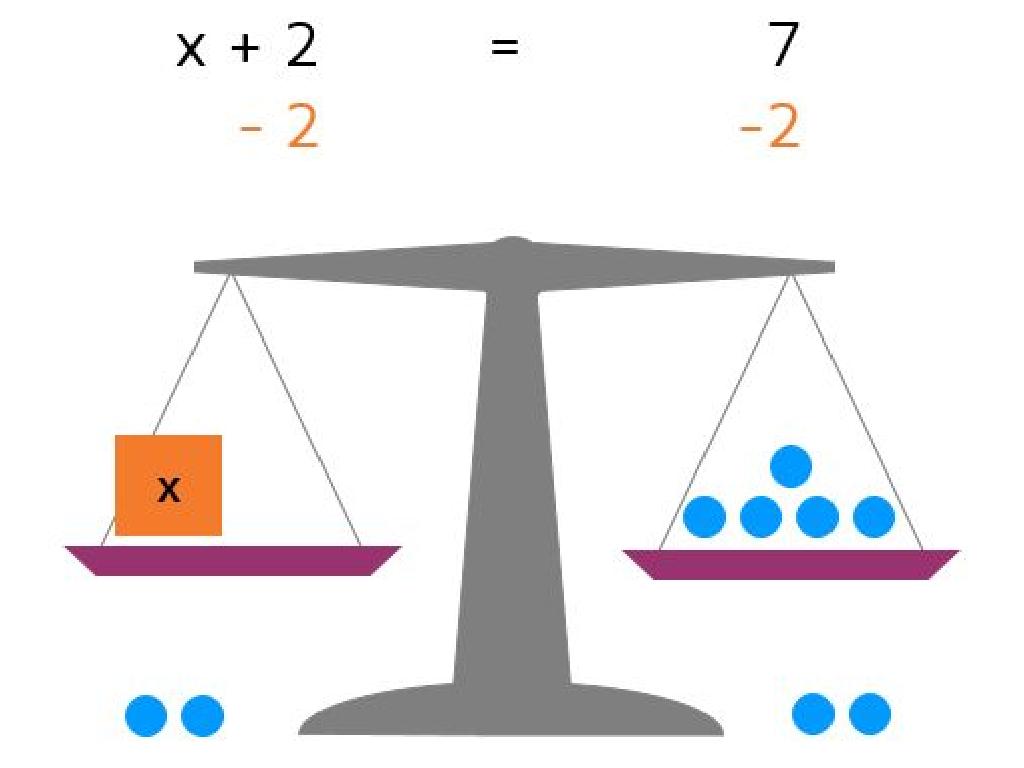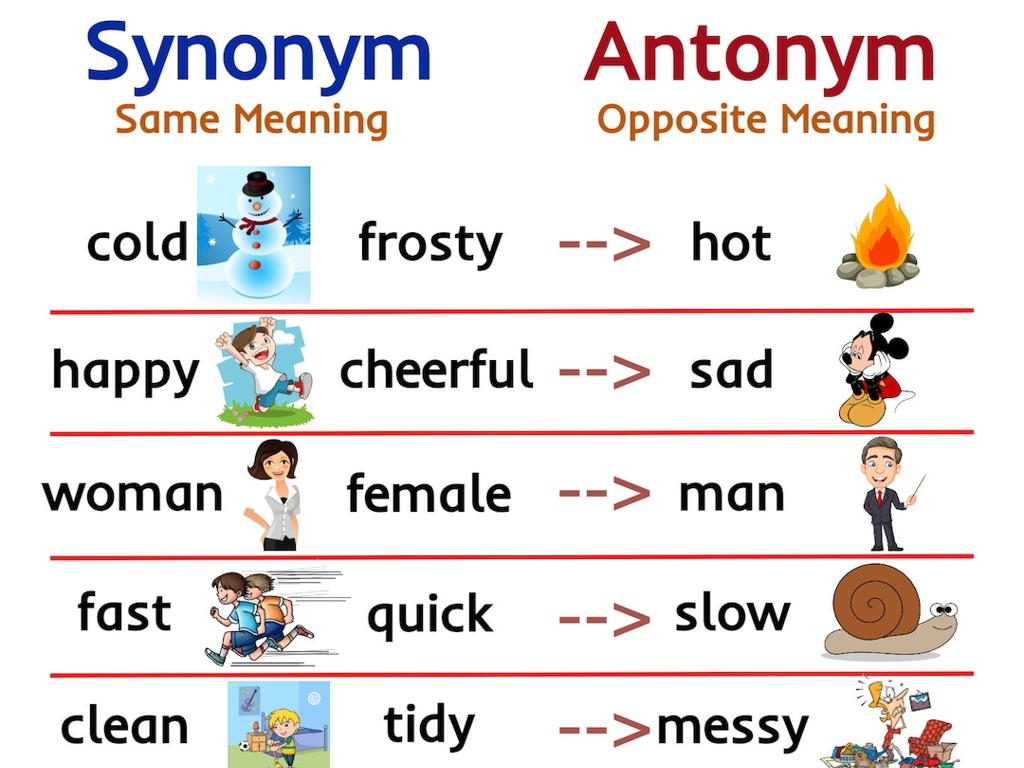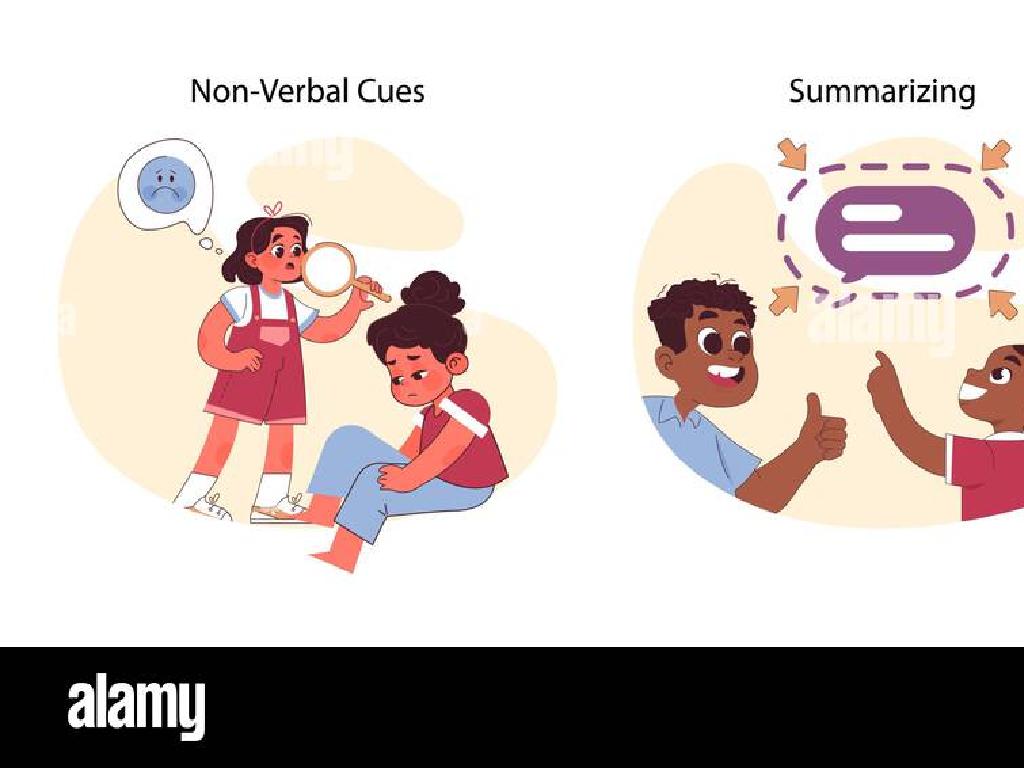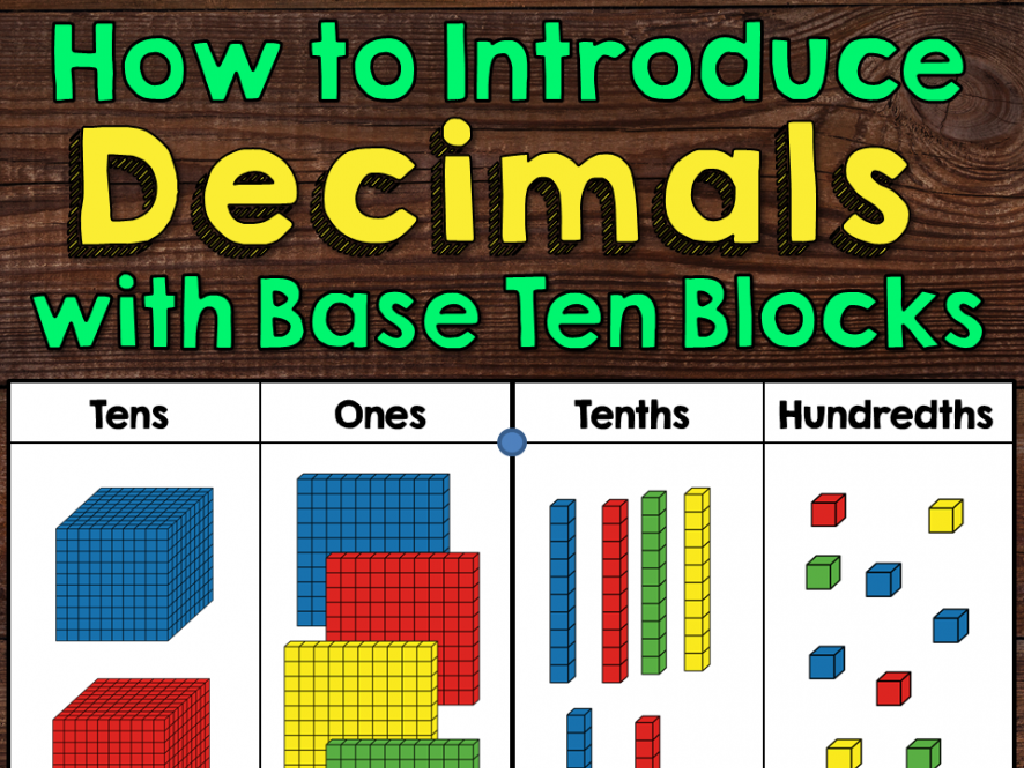Subtracting 9
Subject: Math
Grade: First grade
Topic: Subtraction Up To 20
Summary: This first grade math lesson introduces subtraction up to 20 with a special focus on subtracting 9. Through engaging visuals, hands-on activities, and relatable scenarios like apples and toys, students learn the concept of taking away and see how numbers decrease. Interactive games such as Subtraction Bingo and practice with objects and drawings help reinforce subtraction facts. The lesson builds confidence in solving subtraction problems and develops essential early math skills.
Please LOG IN to download the presentation. Access is available to registered users only.
View More Content
Welcome to Subtraction!
– Greet the day and get ready for math
– Today’s focus: Taking away numbers
– Imagine you have 10 apples and give 1 away. How many do you have now?
– Subtraction shows us what’s left
– If you start with 15 toys and 9 are taken away, count how many stay.
– Practice with subtracting the number 9
– We’ll use objects and pictures to learn how to subtract 9 from different numbers.
|
Begin the class with a warm welcome to set a positive tone for the lesson. Introduce the concept of subtraction as a method of ‘taking away’ and emphasize its usefulness in everyday situations, such as sharing snacks or toys. Use concrete examples and visual aids to help students understand the concept of ‘how many are left’. Engage the class with hands-on activities where they physically remove items and count the remainder to solidify their understanding of subtracting 9 from various numbers. Encourage participation and praise efforts to build confidence.
Understanding Subtraction: Taking Away
– What is subtraction?
– Subtraction means taking away numbers
– The subtraction sign: –
– It’s like a little dash we put between numbers
– Subtracting makes numbers smaller
– If we have 10 apples and take away 1, we have 9 left
– Practice with subtracting 9
|
This slide introduces the concept of subtraction to first graders. Begin by explaining subtraction as the process of taking away one number from another, which makes the number smaller. Show the subtraction sign and ensure students can recognize and draw it. Use tangible examples like apples to illustrate the concept of ‘taking away.’ For practice, focus on subtracting the number 9 from different numbers up to 20. Use visual aids like counters or number lines to help students visualize the subtraction process. Encourage students to use their fingers to count backwards from a number when subtracting 9, reinforcing the idea that the number gets smaller.
Subtracting 9 from Numbers up to 20
– Practice subtracting 9
– Take any number from 10 to 20, then subtract 9.
– Use fingers for counting
– Hold up 10 fingers, put down 9, and count what’s left.
– Numbers get smaller
– Understand subtraction makes numbers less.
– Let’s try some examples!
|
This slide is aimed at helping first graders understand the concept of subtraction by taking away the number 9 from numbers up to 20. Encourage the students to use their fingers as a physical tool to count and subtract, which reinforces the concept that subtraction makes the number smaller. Start with simple examples, such as 10 – 9, and gradually move to larger numbers. Remind them that after subtracting, the number they have is less than the number they started with. Use visual aids if possible, and ensure to give them plenty of practice with different numbers to build their confidence.
Subtracting 9: How Many Apples Left?
– Start with 15 apples
– Give away 9 apples
– How many are left?
– If we take 9 from 15, what number do we get?
– Let’s count and find out!
– We’ll use our fingers or counters to subtract.
|
This slide is designed to help first graders understand the concept of subtraction by visualizing a relatable scenario involving apples. Begin by asking the students to imagine having 15 apples, which sets a concrete foundation for the subtraction problem. Then, guide them through the process of ‘giving away’ 9 apples, which represents the subtraction action. Encourage the students to count backwards from 15 to find out how many apples are left. This exercise not only teaches subtraction but also reinforces counting skills. During the activity, walk around the classroom to ensure that students are engaged and understanding the concept. Offer help where needed and praise their efforts to build confidence.
Using Objects to Learn Subtraction
– Use objects like blocks to subtract
– Subtract 9 blocks from a bigger group
– If we have 15 blocks and take away 9, how many are left?
– Count the remaining blocks together
– We’ll count the blocks that are left after removing 9.
– Understand subtraction by doing
|
This slide is designed to introduce first graders to the concept of subtraction by using tangible objects such as blocks or crayons. By physically removing 9 objects from a larger group, students can visually and practically understand what it means to subtract. It’s a hands-on activity that helps solidify the abstract concept of subtraction. Encourage the students to count aloud the remaining blocks after subtracting 9 to reinforce their counting skills and to confirm their understanding of the subtraction process. This activity can be repeated with different numbers of objects to practice and build confidence in subtracting 9 from various numbers.
Subtracting 9 – Practice Time!
– Try subtracting 9 by yourself
– Use fingers or objects for help
– Count backwards from a number, taking away 9 fingers or objects
– Draw pictures to visualize
– Drawing can make it easier to see the subtraction
– We’ll review answers as a class
|
This slide is designed to encourage active participation from the students in practicing the subtraction of 9 from various numbers up to 20. Provide clear instructions on how they can use their fingers, objects like counters, or drawing simple pictures to subtract 9. This tactile and visual approach caters to different learning styles and helps solidify the concept. After individual practice, regroup as a class to discuss the answers, allowing students to correct any mistakes and understand the process better. Offer praise for effort and correct answers to build confidence. Possible activities: 1) Subtract 9 from 10, 2) Subtract 9 from 15, 3) Subtract 9 from 18, 4) Subtract 9 from 20, 5) Subtract 9 from 14. These activities cater to different levels of difficulty and ensure that all students can participate.
Class Activity: Subtraction Bingo
– Let’s play Subtraction Bingo!
– Solve subtraction problems
– Use subtraction skills to find answers
– Mark the correct answers
– Each correct answer gets you closer to Bingo
– Aim for five in a row to win!
|
This interactive class activity is designed to help first graders practice and reinforce their subtraction skills in a fun and engaging way. Set up the classroom with bingo cards that have answers to subtraction problems involving the number 9. Explain the rules clearly, ensuring that students understand they need to solve subtraction problems and then mark the corresponding answer on their bingo cards. Encourage them to use mental math or counting back strategies to find the answers. Prepare a set of subtraction problems for the game, and consider having small prizes for winners to motivate participation. Rotate through different sets of problems if time allows, so students get ample practice. This activity also promotes attentiveness and quick thinking.
Super Subtractors: Wrapping Up!
– Proud of your subtracting skills
– Subtraction shows what’s left
– Like if 9 toys are taken away, how many do we have now?
– Practice makes perfect
– Try with toys, candies, or fingers to get better
– You’re becoming subtraction stars!
|
Congratulations to the class for learning how to subtract 9 from numbers up to 20. Reinforce the concept that subtraction is a way to find out the remaining quantity after some are taken away. Encourage the students to continue practicing with different items that they can physically manipulate, such as toys or candies, to strengthen their understanding. Acknowledge their hard work and let them know that with practice, they will become proficient at subtraction, just like stars shining bright in the math sky. Prepare a few simple subtraction problems for them to take home and practice.

